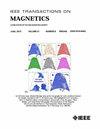Experimental Use of the LiDAR Timing Circuit for Magnetometers Working With Time Conversion
IF 2.1
3区 工程技术
Q3 ENGINEERING, ELECTRICAL & ELECTRONIC
引用次数: 0
Abstract
The aim of the ongoing research at our department in the field of magnetometers is the development of a compact modular magnetometric system operating with amorphous strips and microwires, used as a core. The motivation is in the long-term research, development, and testing of magnetometers with different types of control and processing electronics. The research has led over the years to the development of two types of fluxgate magnetometers. First of them is the VEMA magnetometer developed and realized by the researchers at the Faculty of Aeronautics in cooperation with the EDIS vvd. Company. The second one, considering the current trend of reducing dimensions and power consumption to increase the performance of sensor systems, considers the use of the microwires as the core of the magnetometer due to their small size, low power consumption, and good sensing properties. Both types of magnetometric systems work with the conversion of the magnetic field measurement to the time measurement. For the accurate time measurement in our experiments, the TDC7200 (time to digital converter) circuit designed for the LiDAR with the resolution of 55 ps has been used to measure the relaxation time and the time difference of our magnetometric systems. This article presents the results that were achieved during the experiments aimed at the testing of the accuracy and noise of the created devices.时间转换磁强计激光雷达定时电路的实验应用
我们部门在磁力计领域正在进行的研究的目的是开发一种紧凑的模块化磁力计系统,以非晶带和微线作为核心。其动机是长期研究、开发和测试具有不同类型控制和处理电子设备的磁力计。多年来,这项研究导致了两种类型的磁通门磁强计的发展。首先是由航空学院的研究人员与EDIS vvd合作开发和实现的VEMA磁力计。公司。第二,考虑到当前减小尺寸和功耗以提高传感器系统性能的趋势,考虑使用微线作为磁力计的核心,因为其体积小,功耗低,传感性能好。两种磁强计系统都将磁场测量转换为时间测量。为了在实验中精确测量时间,我们使用了为激光雷达设计的分辨率为55 ps的TDC7200(时间到数字转换器)电路来测量磁强计系统的弛豫时间和时间差。本文介绍了在实验中所取得的结果,旨在测试所创建的设备的精度和噪声。
本文章由计算机程序翻译,如有差异,请以英文原文为准。
求助全文
约1分钟内获得全文
求助全文
来源期刊

IEEE Transactions on Magnetics
工程技术-工程:电子与电气
CiteScore
4.00
自引率
14.30%
发文量
565
审稿时长
4.1 months
期刊介绍:
Science and technology related to the basic physics and engineering of magnetism, magnetic materials, applied magnetics, magnetic devices, and magnetic data storage. The IEEE Transactions on Magnetics publishes scholarly articles of archival value as well as tutorial expositions and critical reviews of classical subjects and topics of current interest.
 求助内容:
求助内容: 应助结果提醒方式:
应助结果提醒方式:


